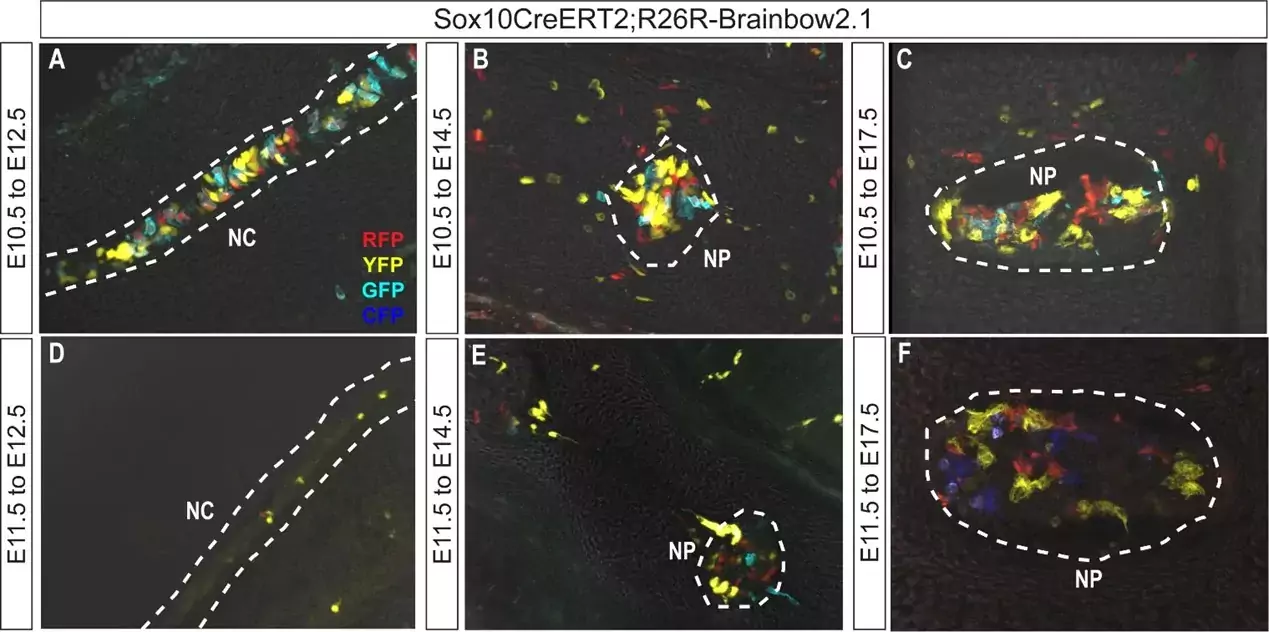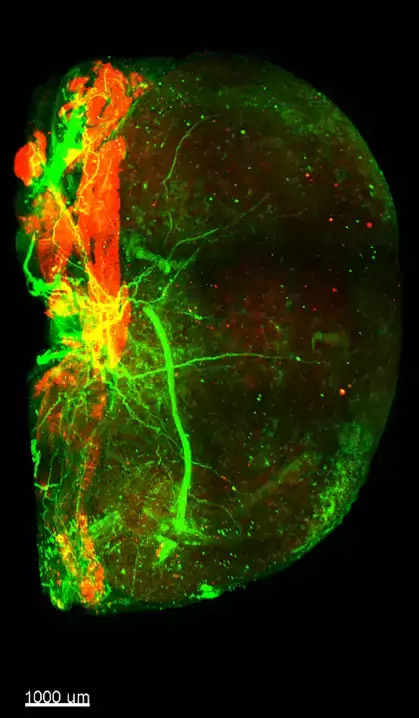Cellular and molecular mechanisms underlying intervertebral disk formation
Low back pain has been reported to be the leading cause of disability worldwide and its lifetime prevalence is as high as 80-85%. In adults, IVD degeneration and extra pressure on the spinal cord as a result of narrowed vertebral column are common causes. In addition, congenital malformations of the spinal cord and vertebral column have been shown to be associated with serious systemic anomalies that may have delayed presentations.

Current treatment for low back pain is mainly limited at the palliative level, which focuses only on pain management and exercise therapy rather than reversal of the underlying pathology. A more thorough understanding of the cellular and molecular mechanisms underlying spinal cord and vertebral column formation will be requisite for the development of novel therapeutic strategies at the pathological level to permanently improve the patients’ life quality.
Our goal is to explore the cellular dynamics and molecular mechanisms that drive and regulate formation of the spinal cord and vertebral column during embryonic development. We mainly use single cell/nucleus RNA sequencing and spatial transcriptomic methods combined with genetic lineage tracing to tackle these scientific questions.

Diversity and plasticity of adipose tissue cell niche
Adipose tissue is an organ with high plasticity that can account for 4-40% of total body mass in human adults. It majorly functions in energy storage (white adipose tissue) and heat production (brown and beige adipose tissue). Excessive growth of adipose tissue leads to the onset of obesity, which is tightly associated with increased risk of type II diabetes, hyperlipidemia, hypertension, and certain types of cancer.
Our goal is to explore:
- How diet intervention affects the cellular diversity of white adipose tissue.
- How environmental temperature affects the lipid composition of brown adipose tissue.
Looking for a Postdoc, Master or PhD Project?
We are constantly looking for highly motivated Master students, PhD students and postdocs who have relevant education background and strong initiative to join our team. Please contact meng.xie@ki.se for potential opportunities.
